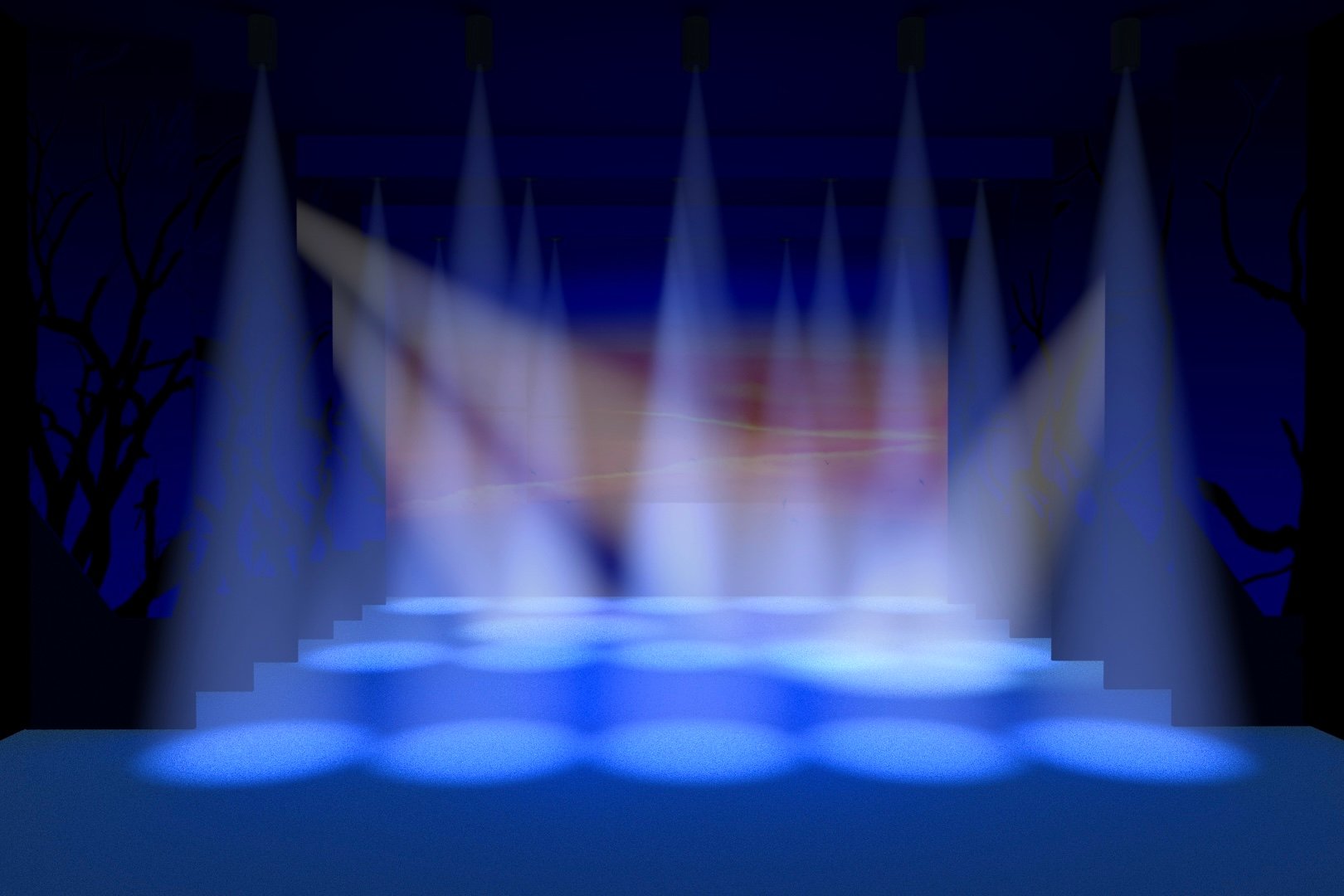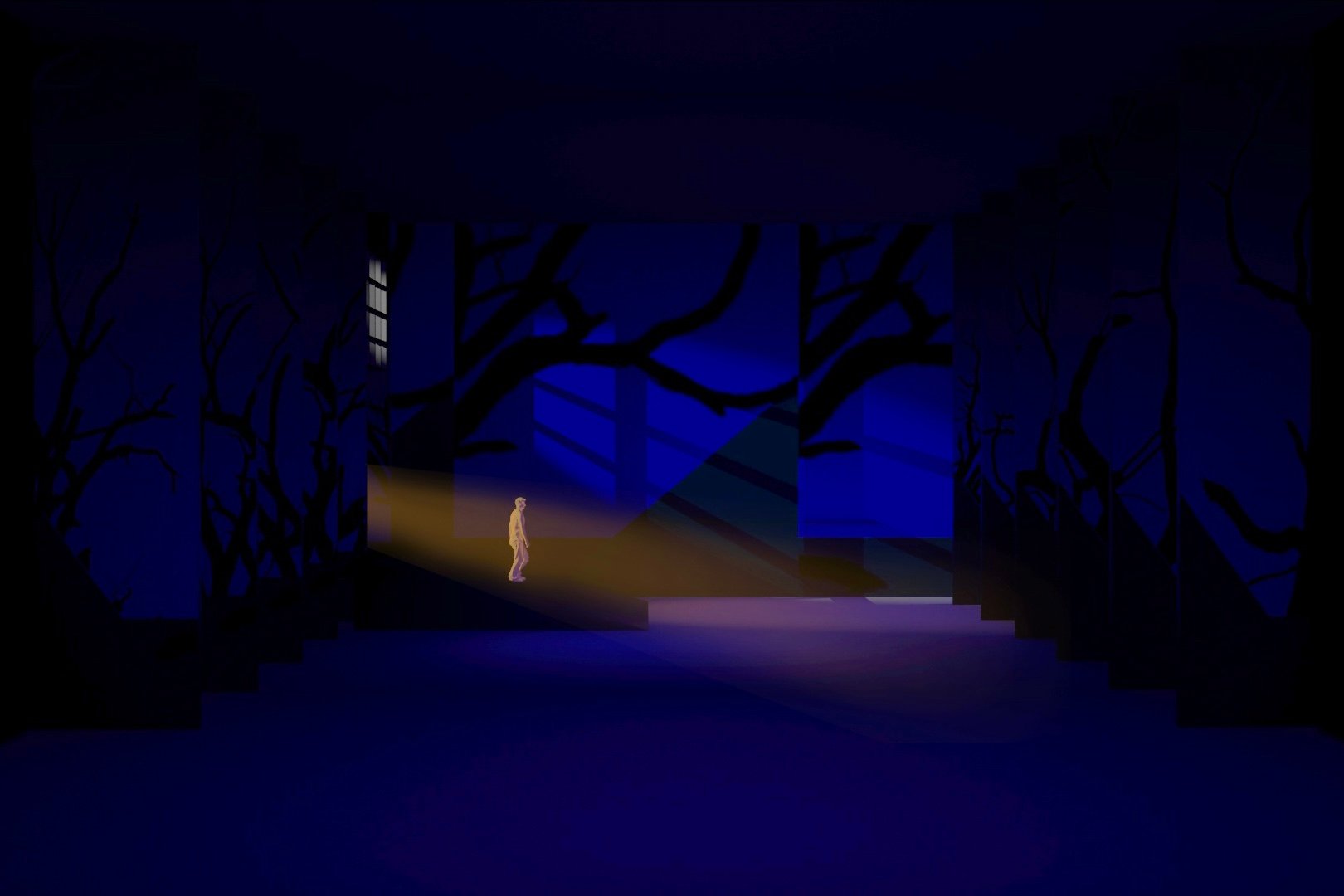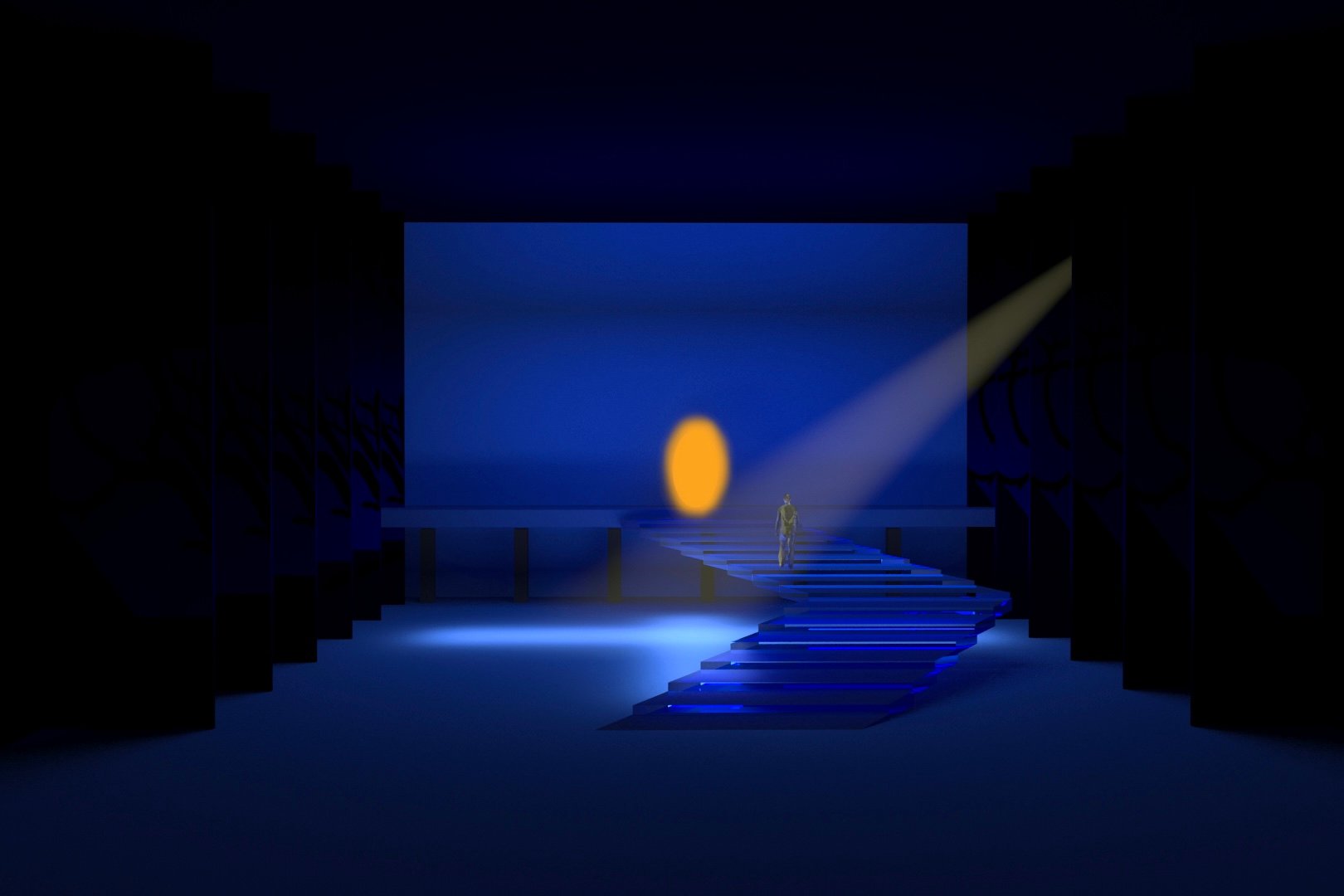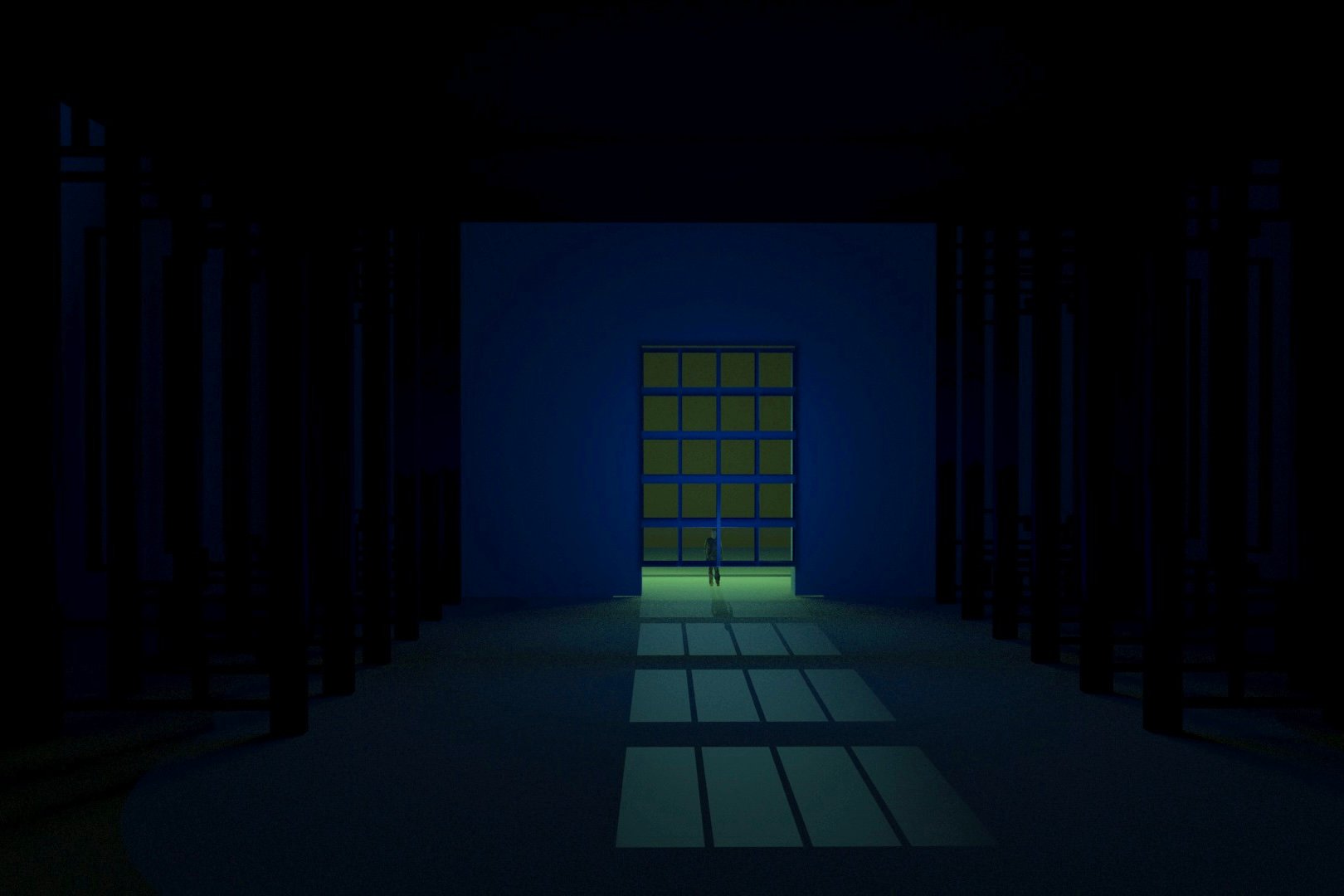Wenxin Tao (Karen)
Email address
moc.liamg@2101xwtBiography
Hi, I’m Wenxin Tao, a multidisciplinary graphic designer specialising in the integration of traditional visual communication and interactive media. My work focuses on overlooked yet pervasive social issues, creating narrative-driven visual expressions through editorial design, 3D, and digital media. I strive to make my visuals a bridge connecting people, creativity, and stories. Currently, I concentrate on poster editing and typography, exploring new possibilities in design while continuously expanding my personal visual language and modes of expression.
Portfolio
Signal-Memory Collection
The core of this project is to cut and rearrange the photographs collected from personal memories, placing seemingly unrelated fragments of time in juxtaposition to form a new narrative logic. Through this ‘fragmentation and reconstruction’, the image loses its original functional narrative and acquires a new visual resonance of abstraction. This visual result allows the viewers to participate in thinking and constructing a new consensus of meaning. The photographs are printed on transparent acetate film and are stacked and reorganised according to the year of memory.
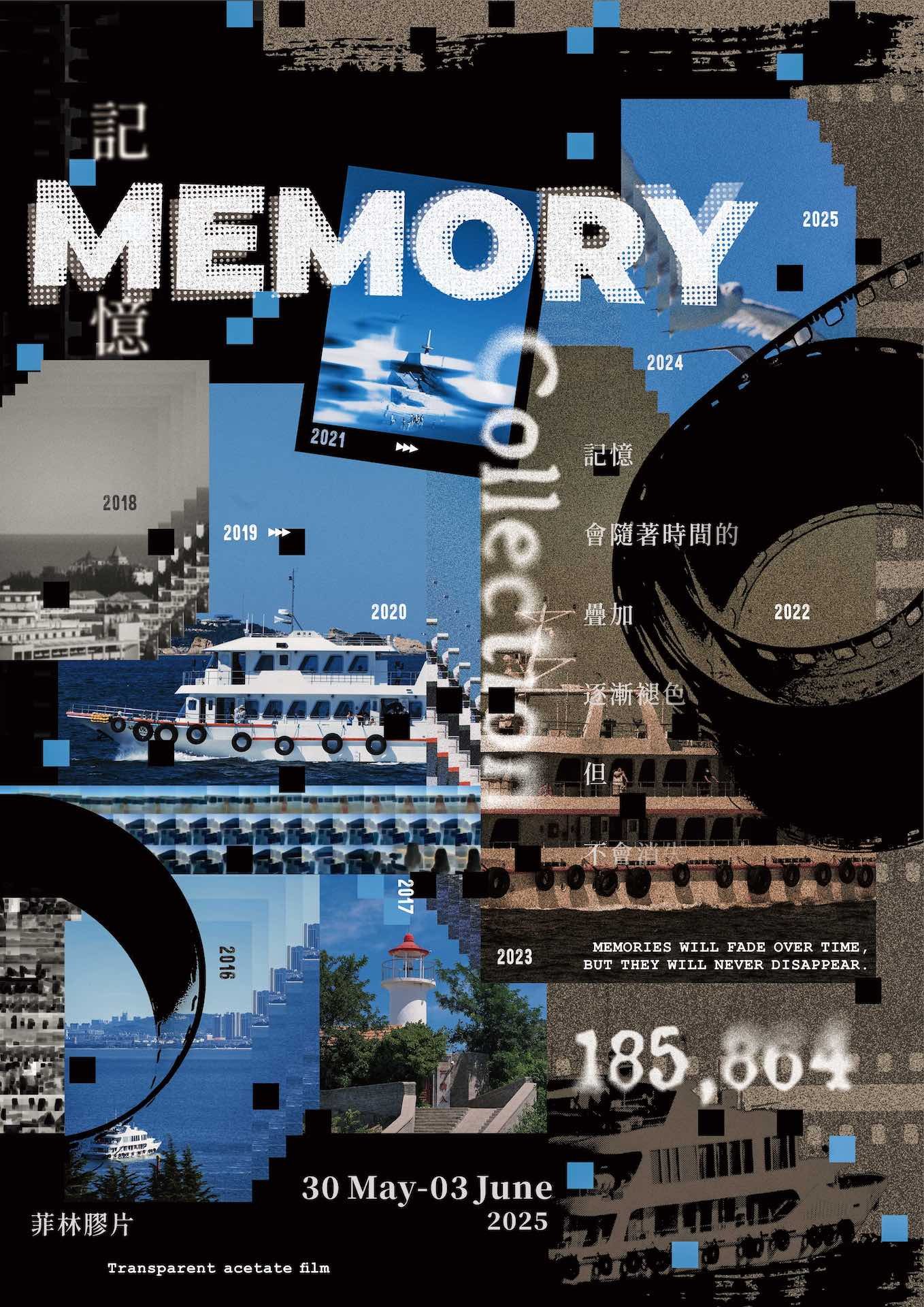
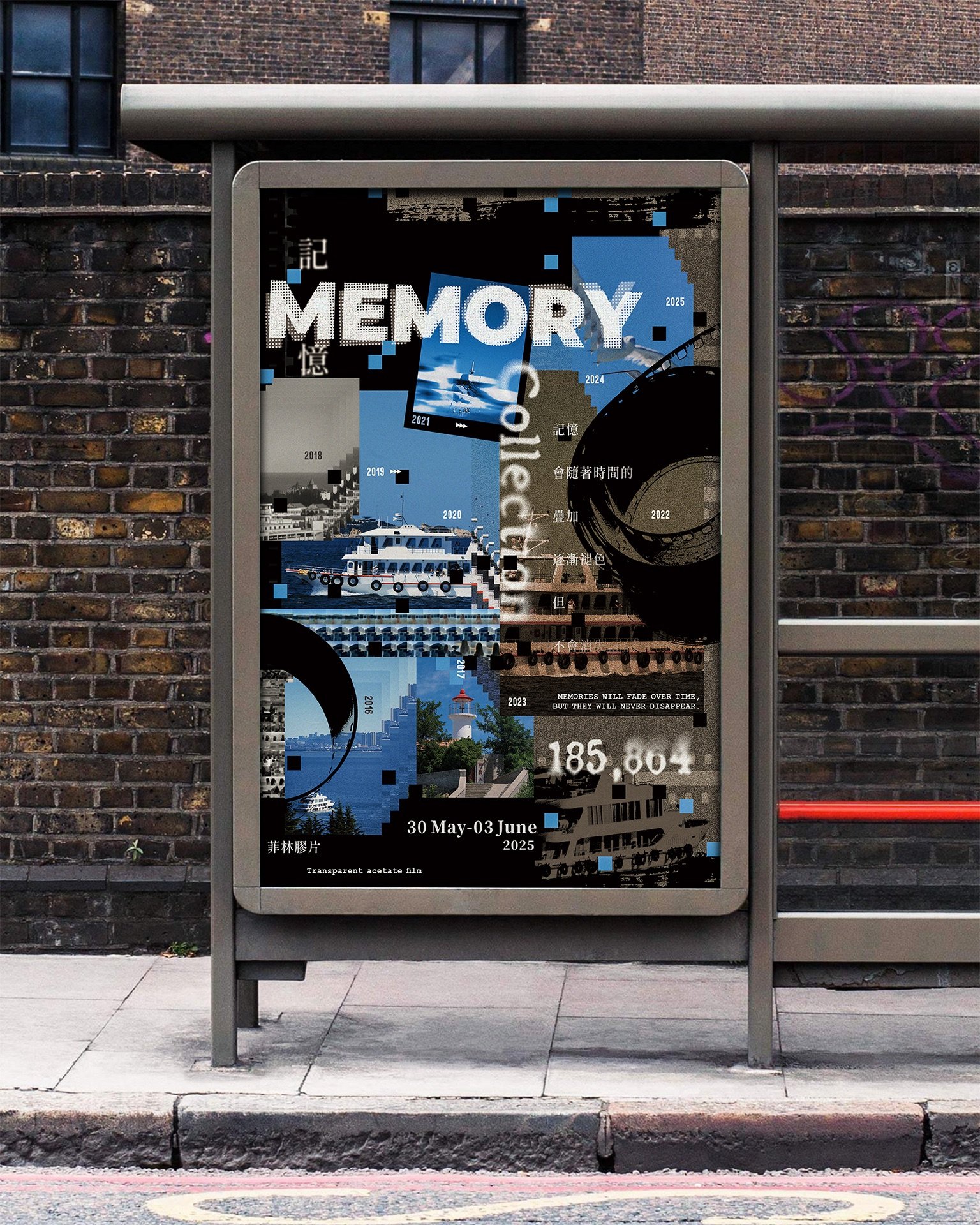
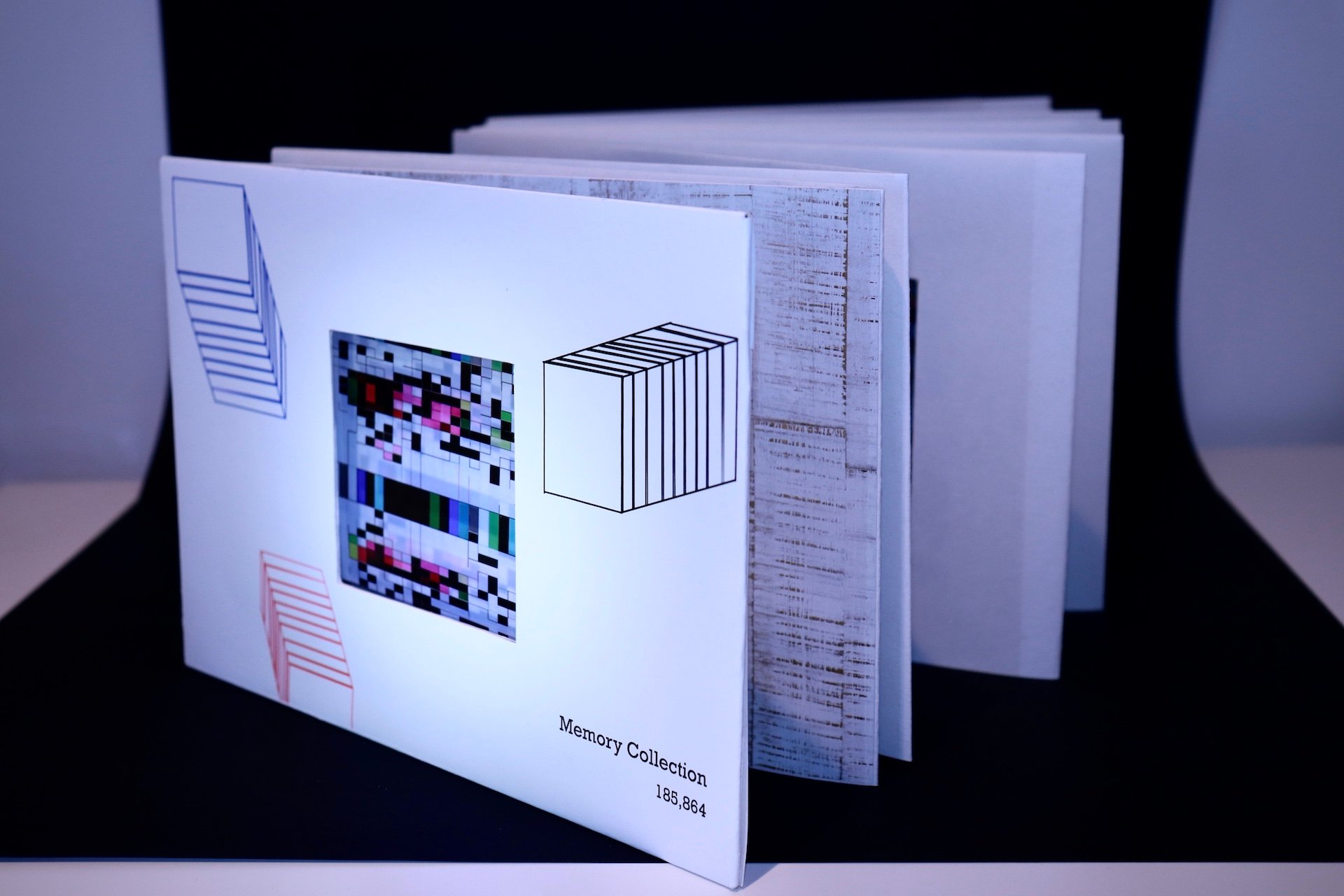
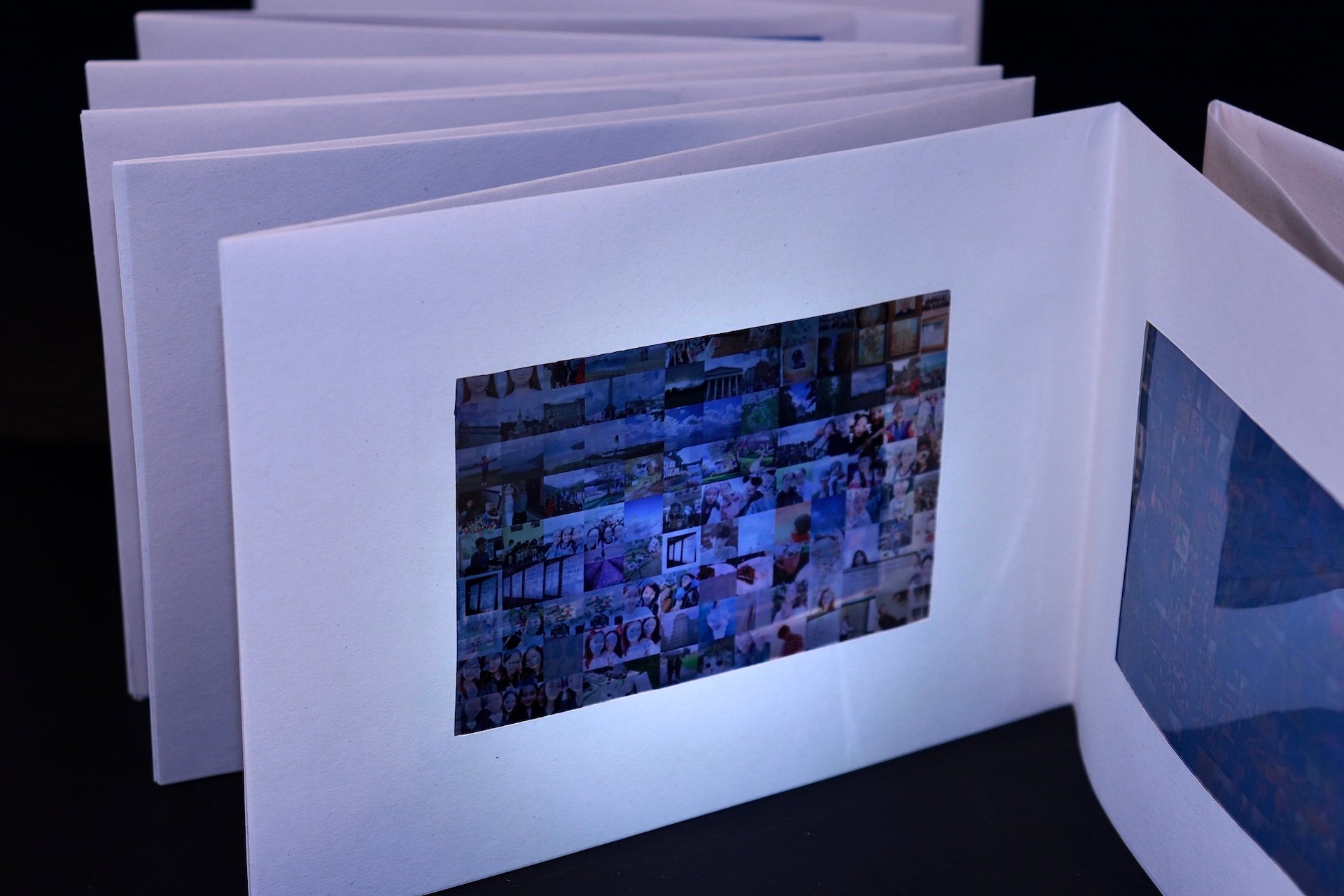
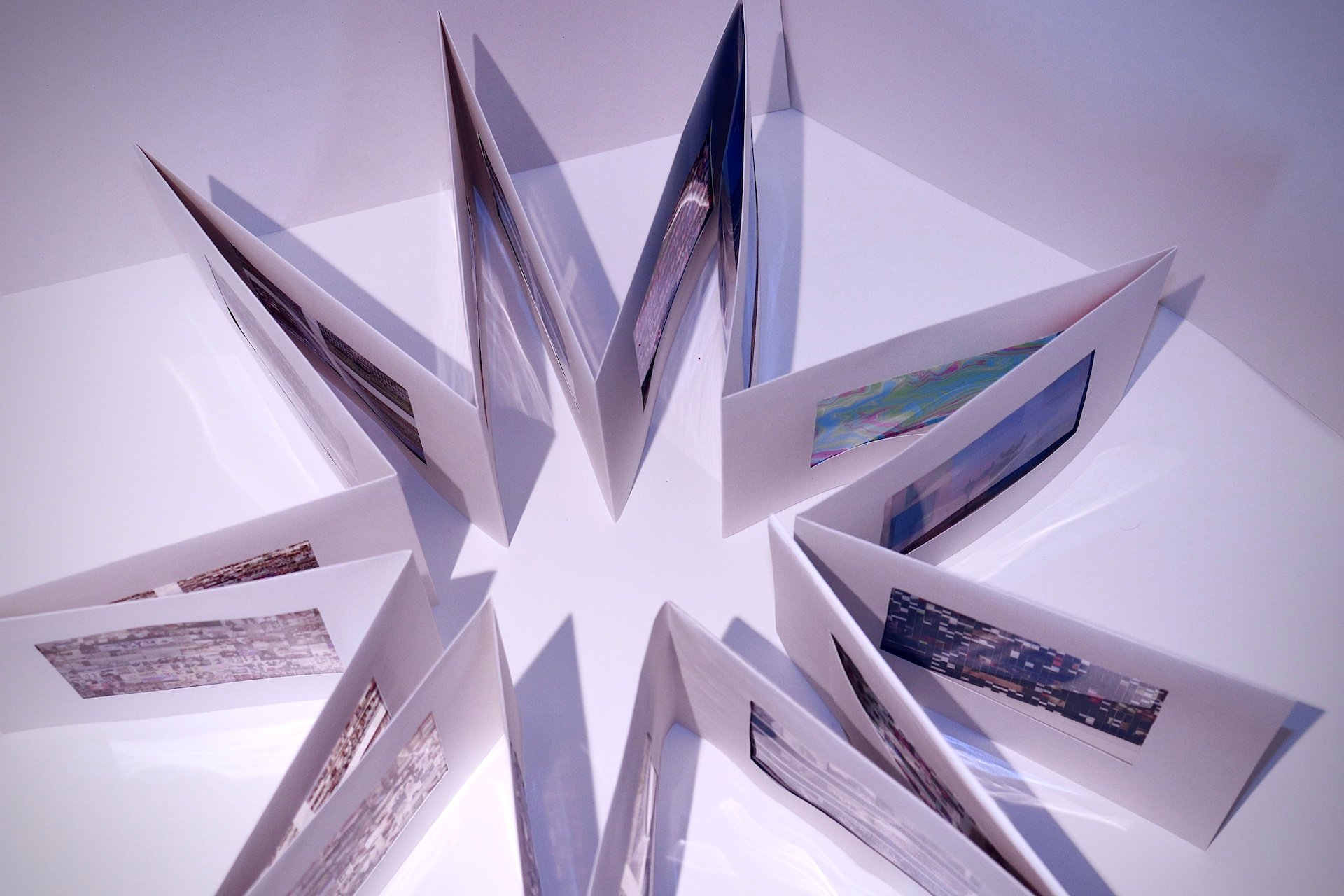
Self-Directed Project
This work combines human contour lines, black-and-white thermal imaging effects, and abstract map elements to create a poster that reveals the complexity of urban space and the interaction between individuals and their environment. The contours of the human figures are presented in an abstract way, stripping away specific identity, while the black-and-white contrast of thermal imaging emphasises the individual’s presence and emotional temperature within the city.
The abstract map elements add layers of spatial depth, symbolising social structure and mobility. Through a unique symbolic visual language, the overall design conveys the rhythm, tension, and uncertainty of urban life, while also prompting deeper reflection on the relationship between people and the city—capturing fleeting moments of urban crowds, where pedestrians move like shadows through an endless maze.
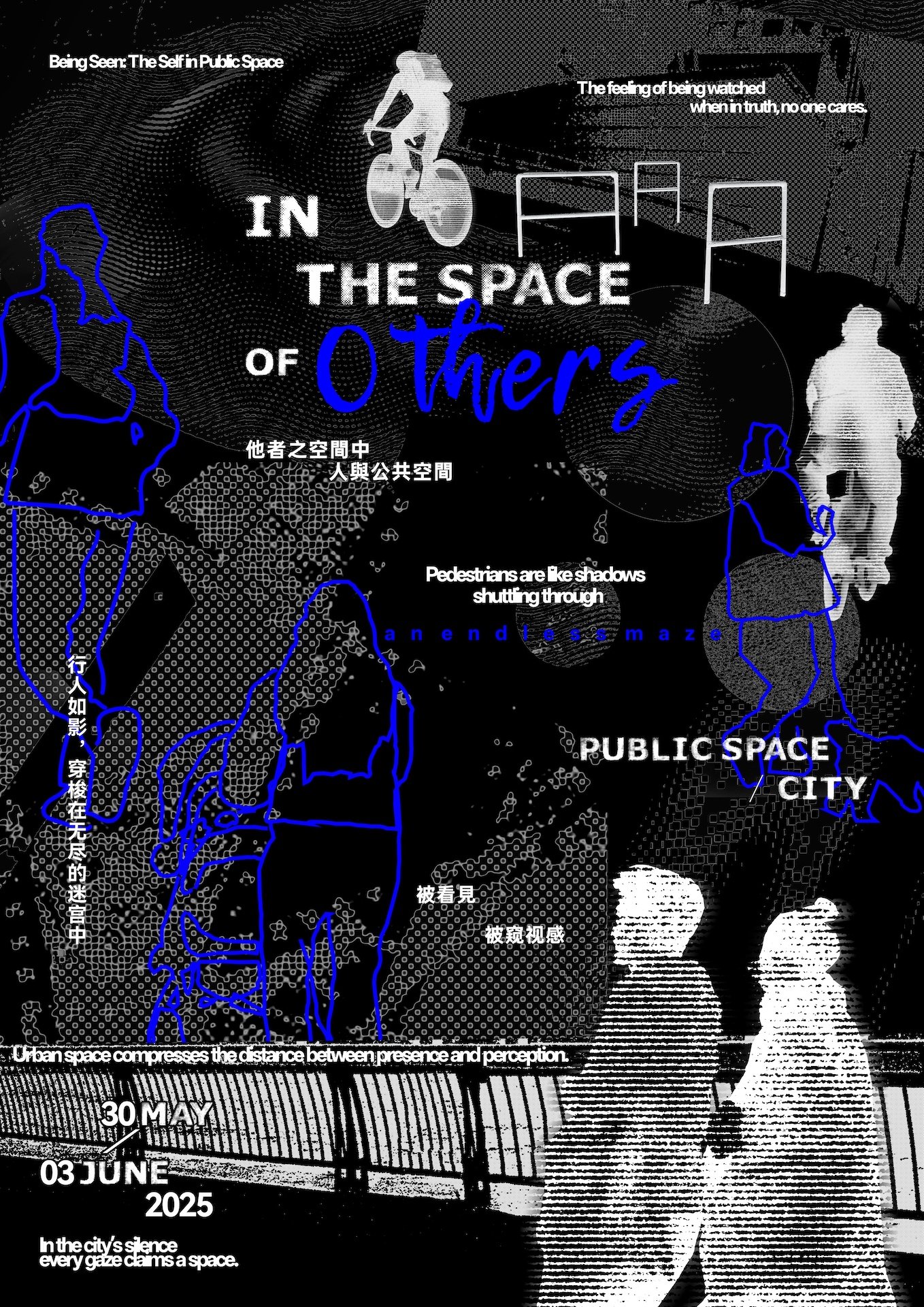
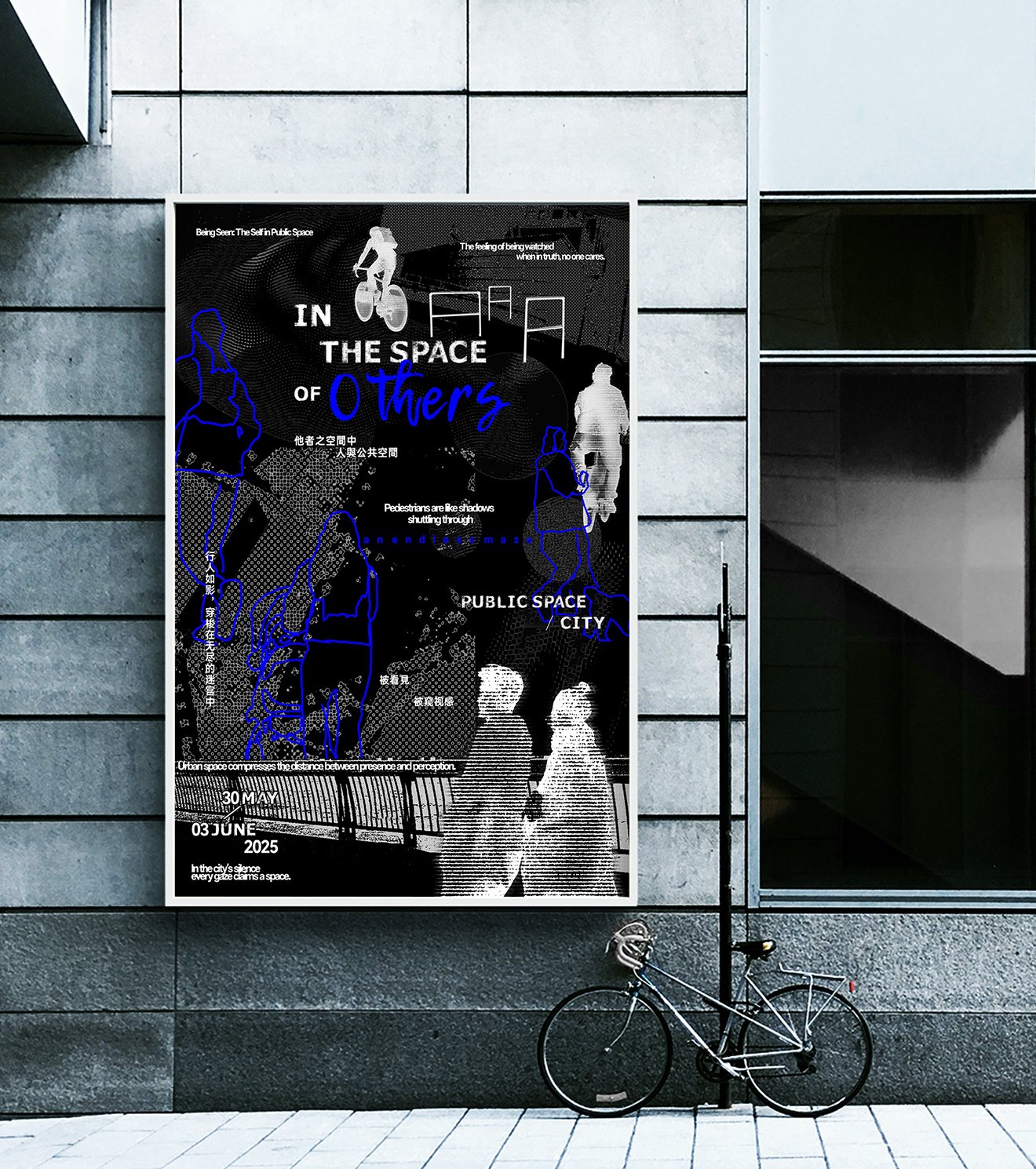
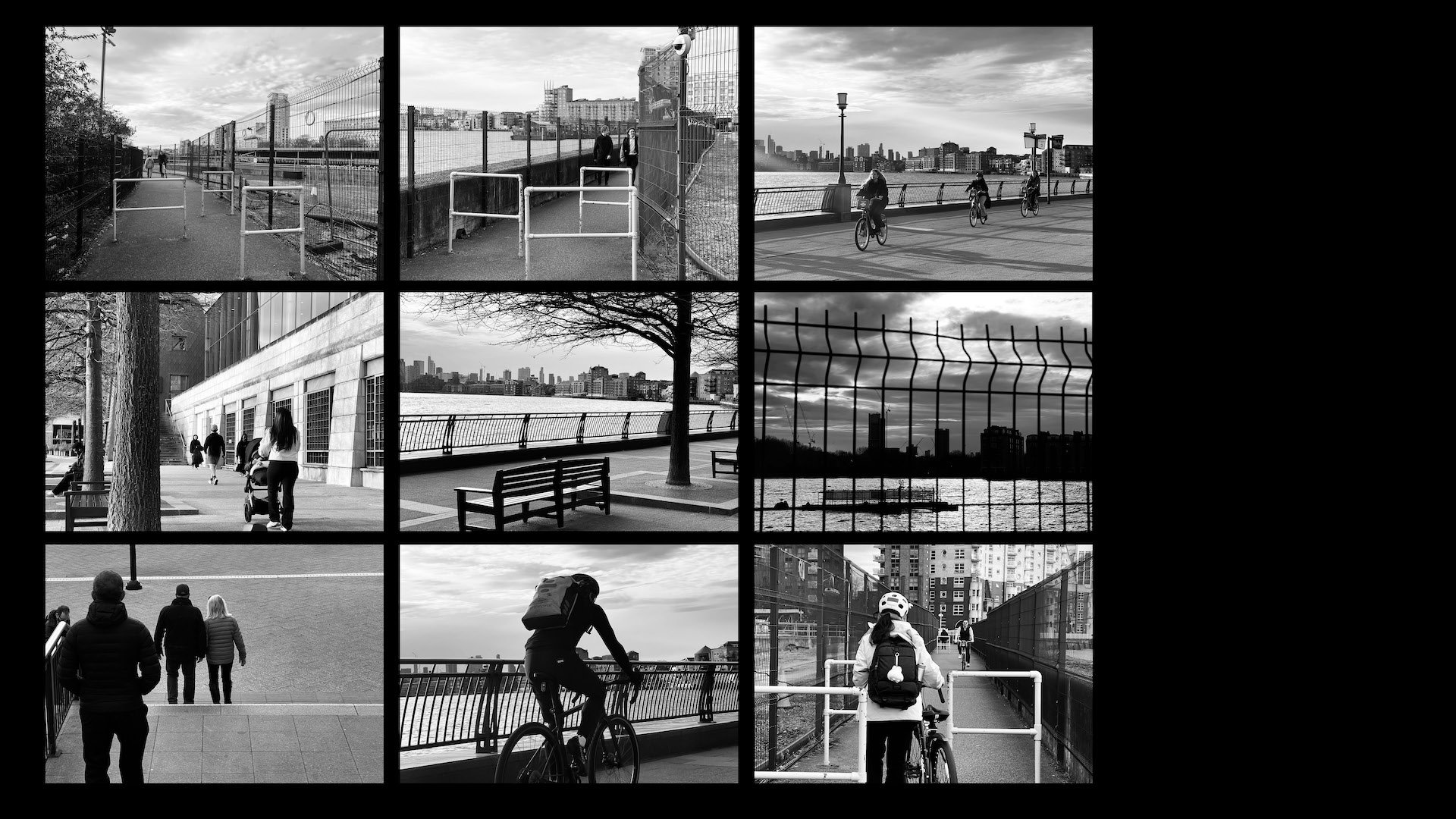
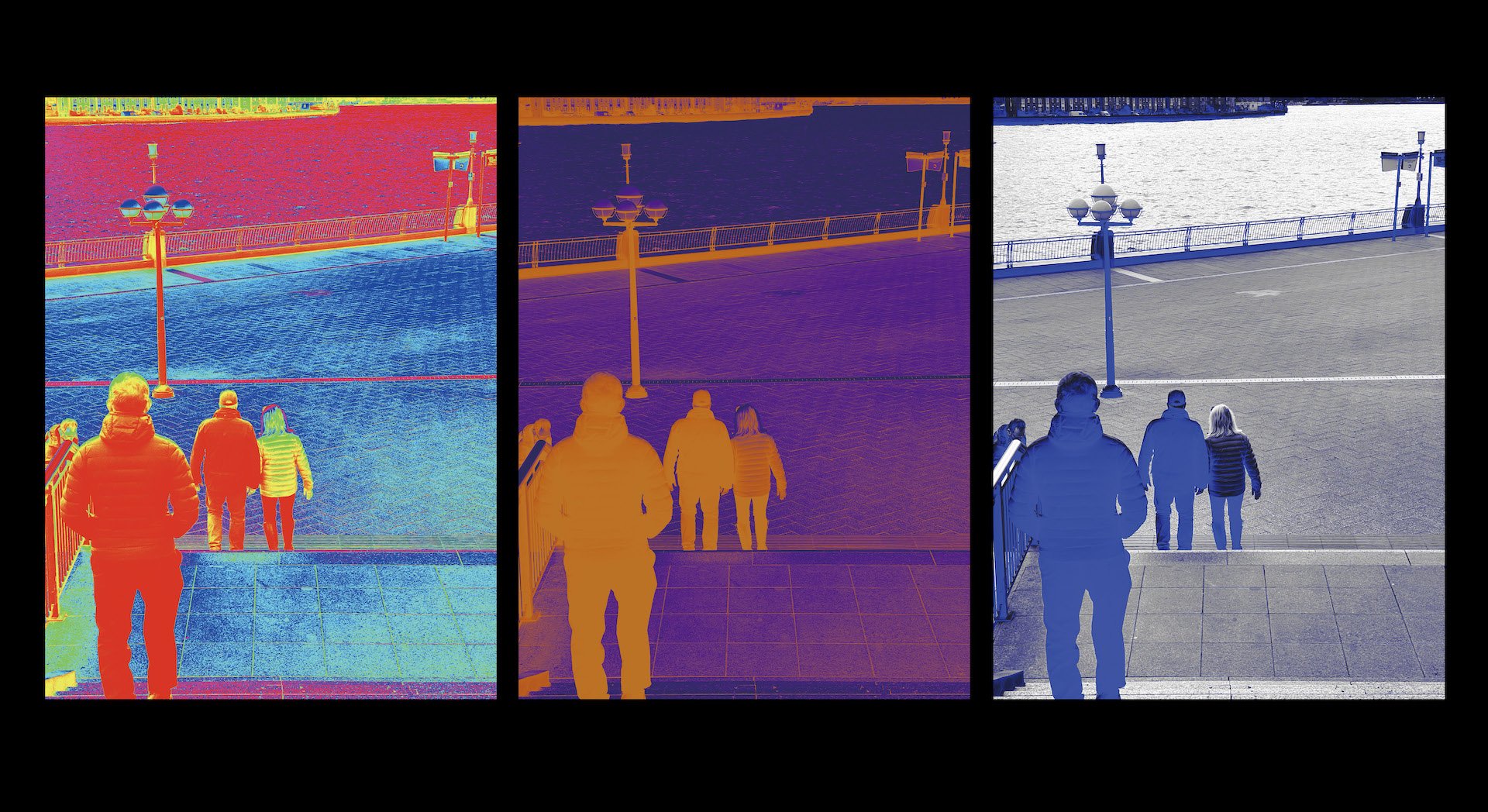
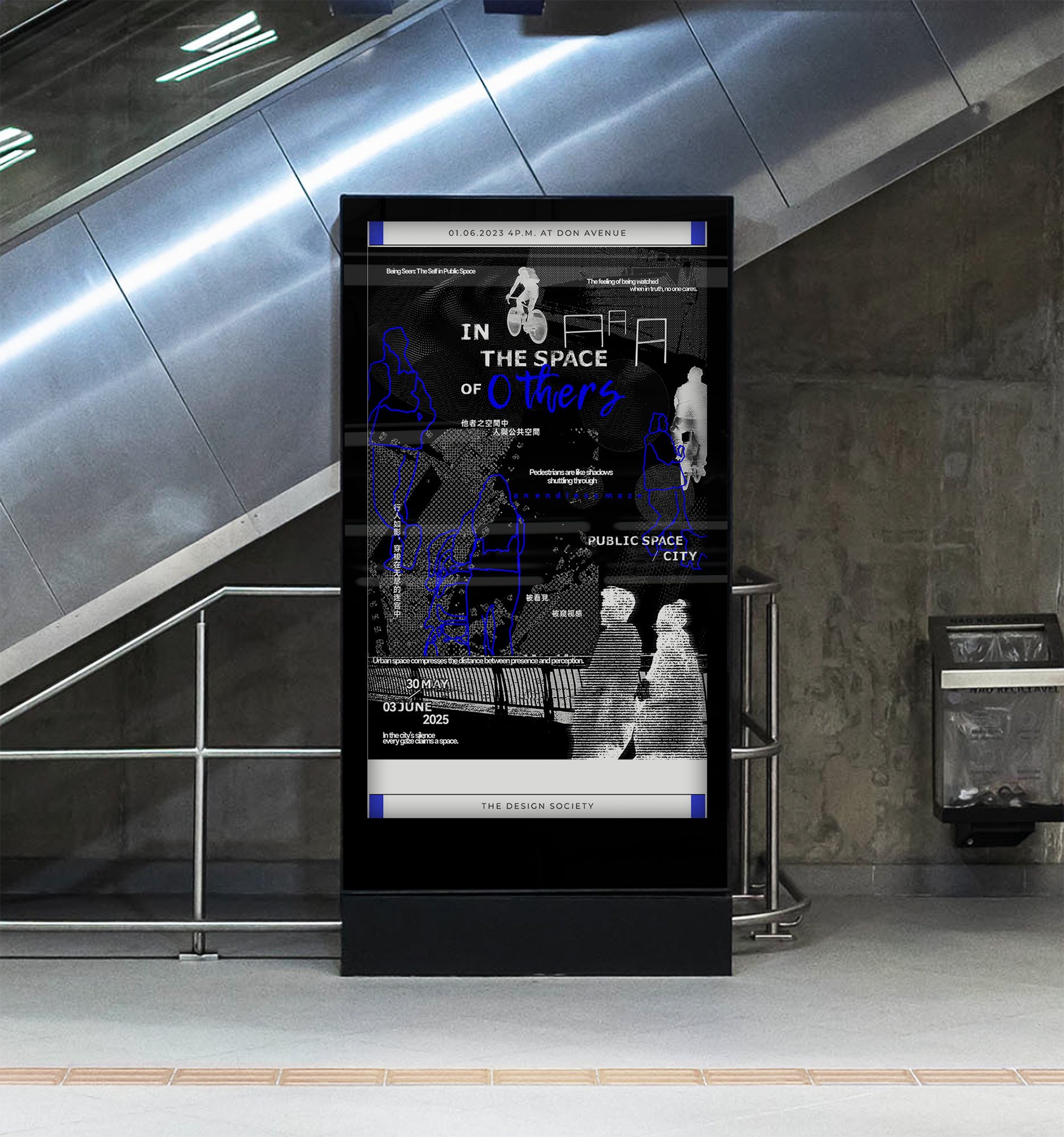
Stage Design and Lighting
This stage design project centres on the principles of perspective and lighting layout to establish a strong visual connection between the audience and the scene. By positioning the central viewpoint at the backdrop of the stage, all spatial elements unfold according to the rules of perspective—expanding in the foreground and gradually shrinking into the background—to create a realistic sense of depth.
The lighting design is also based on perspective, ensuring a balanced illumination and dramatic focus. Through the use of 3ds Max and Photoshop to build and simulate the three-dimensional stage environment, the spatial concept and the transformation of light and shadow are vividly presented.
Across four different scenes, the stage explores emotional and psychological states through symbolism and lighting.
